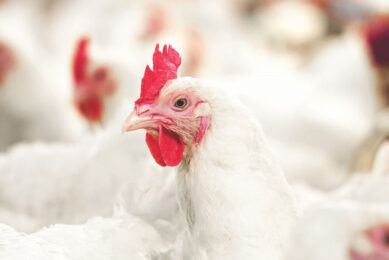Oregano essential oil: A solution to antimicrobial resistance in poultry

Antimicrobial resistance is predicted to be the biggest cause of human deaths by 2050. Animal protein producers, therefore, need to urgently identify and implement solutions that can reduce our reliance on antimicrobial substances.
For many years the poultry industry has relied on antimicrobials to both prevent and ameliorate disease. Despite the industry recognising the impending antimicrobial resistance crisis and trying to implement change, we are still highly reliant upon many antimicrobial compounds to ensure the health and welfare of commercial poultry as well as the safety of the human food chain.
Antimicrobial resistance occurs when a microbe evolves mechanisms to evade eradication by a given antimicrobial compound. We often tend to think of antimicrobials as just antibiotics; however, it is important to remember that in addition to bacteria, fungal, viral, and parasitic microbes are also becoming resistant to compounds that have formally been used to control them.
Antimicrobials in poultry production
We use antimicrobials for various purposes in poultry production, from cleaning sheds to treating illness. The inherent nature of commercial production can be highly challenging. High stocking densities, enclosed spaces and integral stress can all exacerbate the occurrence of disease. Historically, this was managed by the prophylactic use of antibiotics, which conferred growth promoting benefits due to reduced pathogen load in both the feed and intestinal tract, as well as reducing the production of toxins by intestinal bacteria.
Antimicrobial compounds work by targeting key mechanisms of the microbe, such as inhibiting the cell wall synthesis, interrupting DNA replication, and disrupting cell membrane function. Many of the traditional broad-spectrum drugs target multiple mechanisms, whilst some of the more modern drugs are more specific and target a single mechanism. The traditional broad-spectrum drugs have now been used repeatedly for so long that many are experiencing resistance problems from some bacterial strains. Conversely, whilst the modern targeted drugs have been in circulation for far less time, their single mode of action make it far easier for bacteria to evolve and become resistant. As such, antimicrobial resistance is becoming more widespread.
Essential oils
Essential oils form a protective system for plants, helping to protect them from predation and microbial infection, as well as encouraging reproduction via insect pollination. Often comprised of over 100 different active compounds, essential oils offer a broad range of activities and benefits. Oregano essential oil has been extensively researched, demonstrating numerous properties as an antimicrobial, anti-fungal, anti-inflammatory, and anthelmintic. It has been scientifically proven that supplementing livestock with oregano essential oil can confer many activities and benefits that the essential oil performs in the plant, thereby offering numerous health and performance benefits.
Unlike traditional antimicrobials, the complex composition of active compounds in essential oils have been shown to greatly reduce the possibility of microbial resistance, therefore offering a potential alternative for disease mitigation in livestock.
The use of oregano essential oil in broiler production

Orego-Stim is a natural oregano essential oil-based supplement (Anpario plc, UK) developed to manage intestinal health and support optimum gut integrity. With over 25 years of research, Orego-Stim has been shown to consistently support the health and performance of livestock.
A recent university study compared the supplementation of broilers with either Orego-Stim or enramycin, an antibiotic used for both disease prevention and growth promotion. The study raised 180 Ross 308 broilers from 0 to 35 days. Birds were housed 15 birds per pen and 6 pen replicates per treatment with ad libitum access to feed and water. Corn/soy diets were supplemented with either 10ppm of enramycin (standard veterinary dose) or 300g/t of Orego-Stim throughout the study. Feed consumption performance and mortality were assessed.

Results found that the Orego-Stim supplemented birds were not only able to match the performance of the antibiotic supplemented birds, but at 35 days, the Orego-Stim group achieved significantly higher body weights compared to the enramycin group (Figure 1).
The Orego-Stim supplemented group achieved a 4-point reduction in FCR compared to the enramycin group, the data shows OEO can offer superior performance benefits to the antibiotic growth promotor. There was no significant difference in liveability between treatments (Figure 2).
Economic impact
When the economic impact of the study was assessed, the additional live weight achieved resulted in an extra £0.10 of return per bird and even when the cost of additives and feed consumed was accounted for, this resulted in an additional £0.08 per bird (Table 1) compared to the antibiotic treatment.
Summary
In summary, the use of natural oregano essential oil has decades of research to demonstrate its efficacy in supporting the health and performance of livestock without the high risk of microbial resistance found with traditional antimicrobials such as antibiotics, anthelmintics, coccidiostats etc.
This study demonstrates the value of Orego-Stim to support intestinal health and gut integrity and as a viable alternative tool to prophylactic and growth promoting antibiotics, both in terms of superior performance and improved economic impact. As such Oregano essential oil could offer a valuable tool for producers of animal protein in the fight against antimicrobial resistance.



